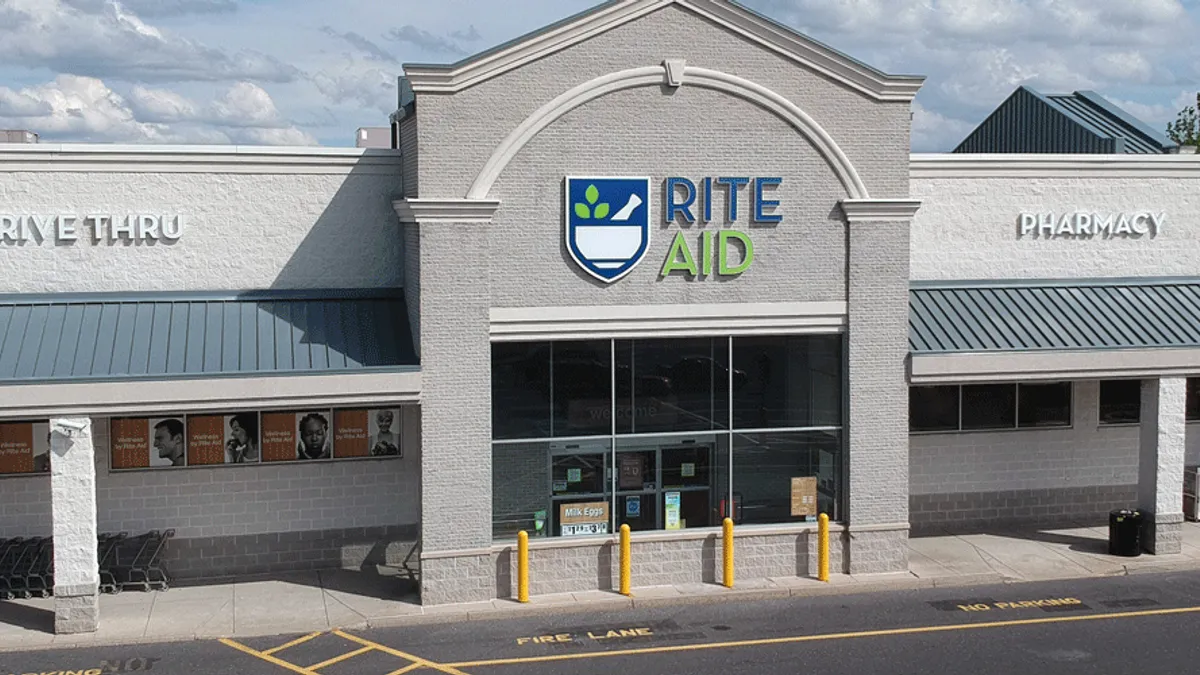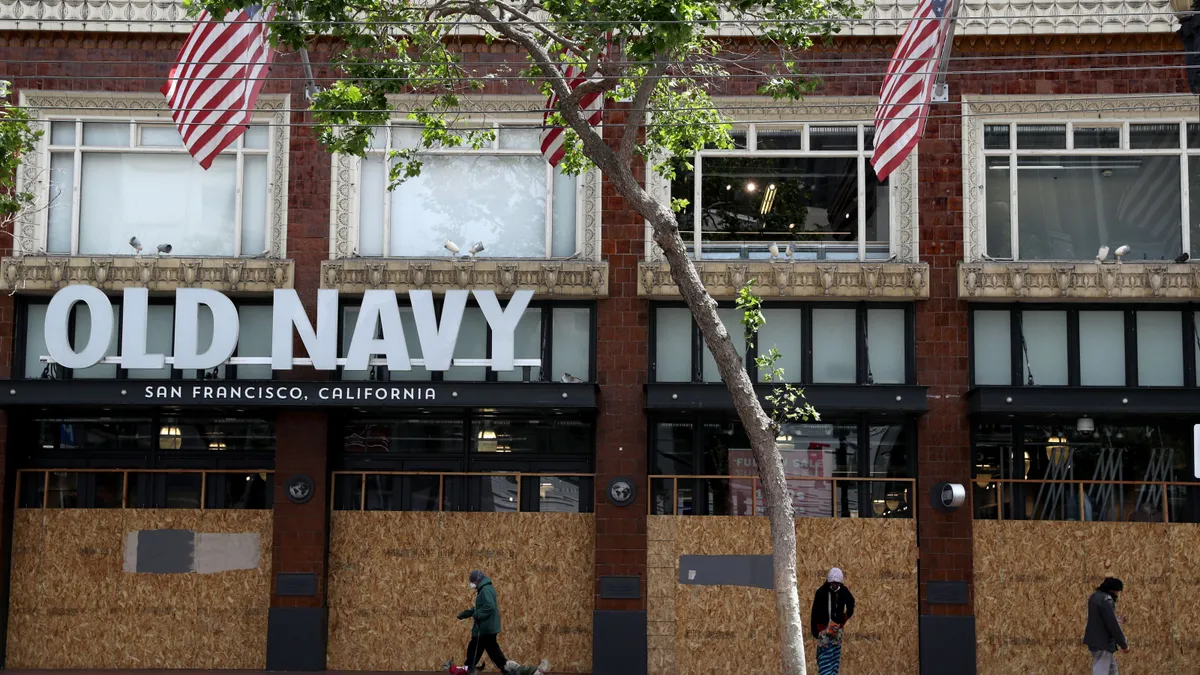Dive Brief:
-
Rite Aid filed for bankruptcy on Monday, with plans to sell itself, and has already had “meaningful interest” from potential national and regional strategic buyers. Stores will remain open and operating, but plans are to liquidate all locations unless a buyer comes forward, according to court documents.
-
The drugstore retailer has secured commitments from some existing lenders to access $1.94 billion in new financing. That plus cash from operations is expected to be sufficient funding during the sale and court-supervised Chapter 11 process.
-
A sale is imminent, with an auction set for May 14 for the pharmacy assets and June 20 for other assets, per court documents. The company just exited a previous bankruptcy in September, after filing less than two years ago, emerging as a private business with about $2 billion less debt plus some $2.5 billion in exit financing.
Dive Insight:
Rite Aid said it never really had a chance to right itself following its 2023 bankruptcy, saying many vendors failed to live up to agreements to ease their terms. Moreover, the company faced unforeseen liquidity issues when, instead of the $166 million it expected, it could only – months later – secure $66.75 million, per court filings.
The empty shelves meant fewer impulse purchases and lower front-of-store sales, and the strained finances meant the retailer struggled to replenish assortments.
“In other words, the Company became trapped in a vicious cycle, where tightening liquidity led to empty store shelves, and vice versa,” Marc Liebman, managing director at Alvarez &Marsal North America who is serving as Rite Aid’s chief transformation officer, wrote to the court on Tuesday.
At its 2023 filing, Rite Aid operated more than 2,100 stores in 17 states and employed more than 6,100 pharmacists and 45,000 total employees. During that bankruptcy, it sold or wound down about 800 underperforming stores. Since exiting that process, Rite Aid has closed another 29 underperforming locations. The company has now entered into purchase agreements of prescription files at 60 stores, and plans 50 closures without prescription sales. Finally, there are 275 stores “that have or will have asset purchase agreements for regional transactions in process,” per court documents.
At this point, Rite Aid operates 1,277 stores and three distribution centers in 15 states and employs about 24,500 people.
There are observers who didn’t anticipate this filing because they saw its 2023 process as successful, according to Sarah Foss, head of restructuring at Debtwire. Plans to hold a sale “at lightning speed” are now crucial, she said by email.
“A long, drawn-out sale process could be the death knell for Rite Aid as the value of the company’s assets can deteriorate quickly, especially if pharmacy customers choose to go elsewhere upon news of the bankruptcy and impending sales,” she said.
To GlobalData Managing Director Neil Saunders the filing is unsurprising, however.
“The first bankruptcy did little to resolve the chain’s issues, and it has been teetering on the edge of survival for quite some time,” he said in emailed comments, adding that the drugstore retailer is now at the bottom of the vicious cycle it describes in its filing, making another bankruptcy its only option.
While Rite Aid plans to sell itself, and soon, it’s unlikely to survive as the chain we know today, Saunders also said. Walgreens, which did once want to take over Rite Aid, is now “in no position to be snapping up other chains,” and CVS is downsizing.
“The problem here is that there are no ideal suitors,” he said. “There are wildcards, such as Amazon, which could at least buy the Seattle native Bartell Drugs subsidiary. But this is a long shot.”
Rite Aid CEO Matt Schroeder, who took the post just eight months ago as the retailer ended its last bankruptcy, said the company “continued to face financial challenges, intensified by the rapidly evolving retail and healthcare landscapes in which we operate” – and that its priority is to continue to serve customers as it enters another one.
“For more than 60 years, Rite Aid has been a proud provider of pharmacy services and products to our loyal customers,” he said in a statement.
The company is working to transfer customer prescriptions to other pharmacies, and the employees assisting with that will continue to receive pay and benefits, according to a press release Monday.















